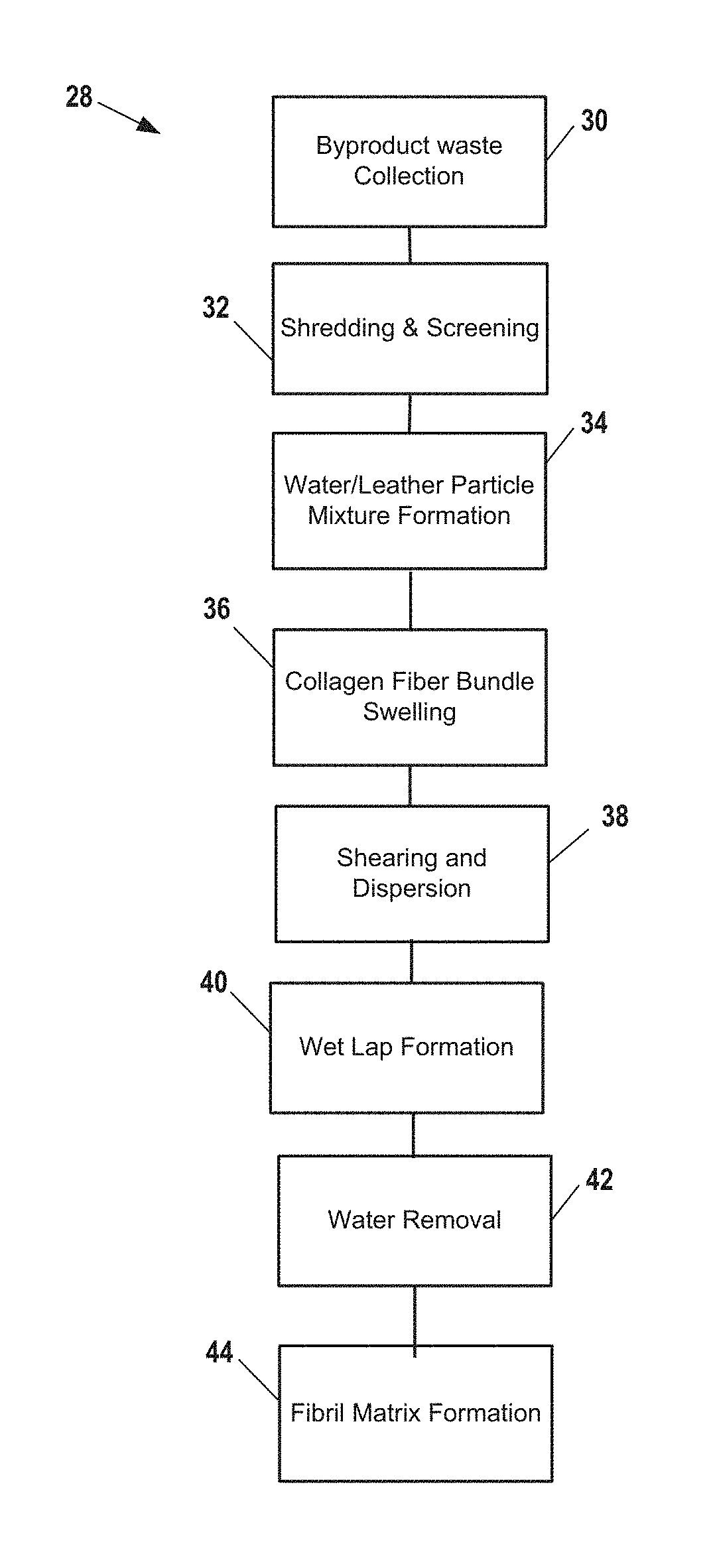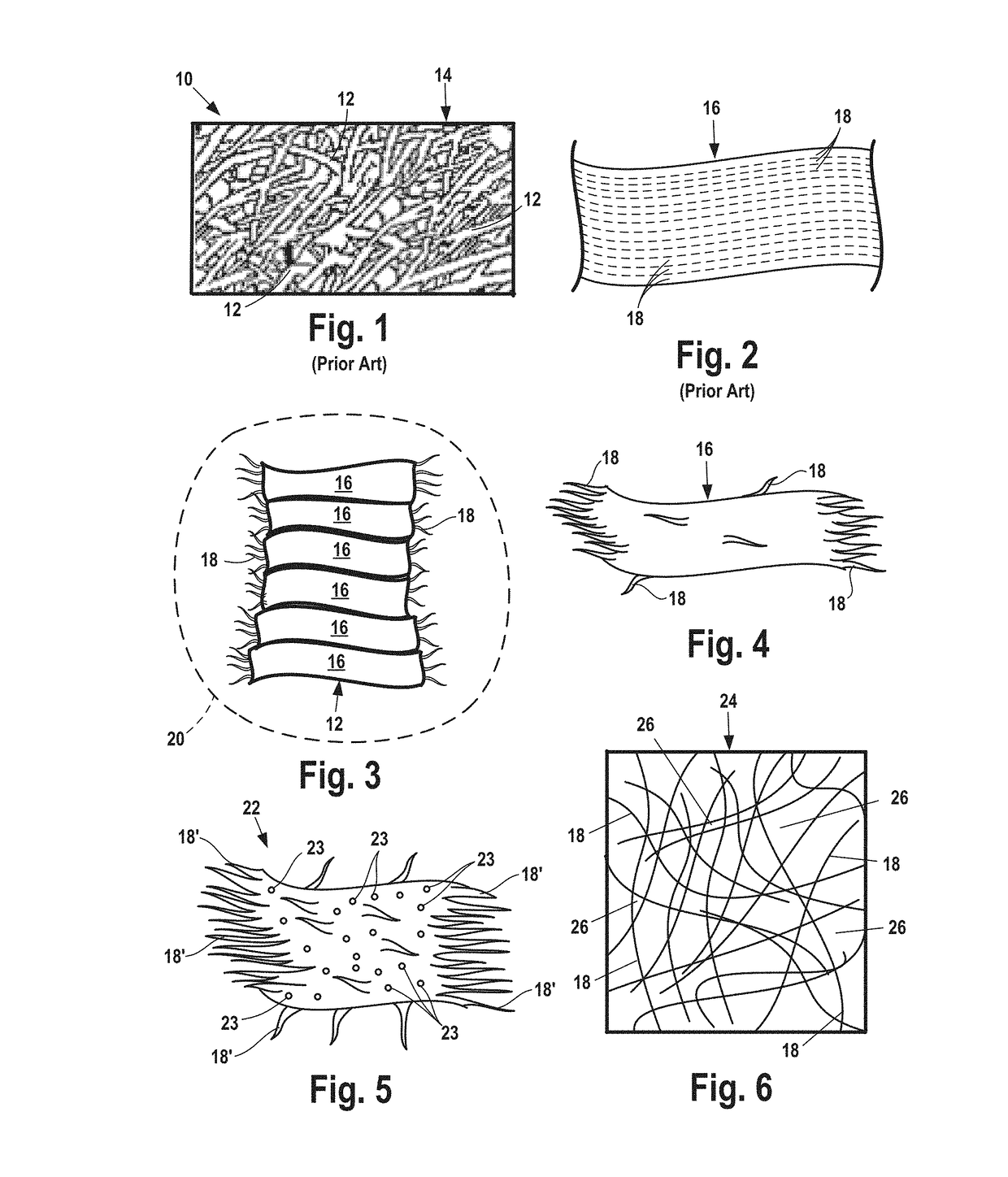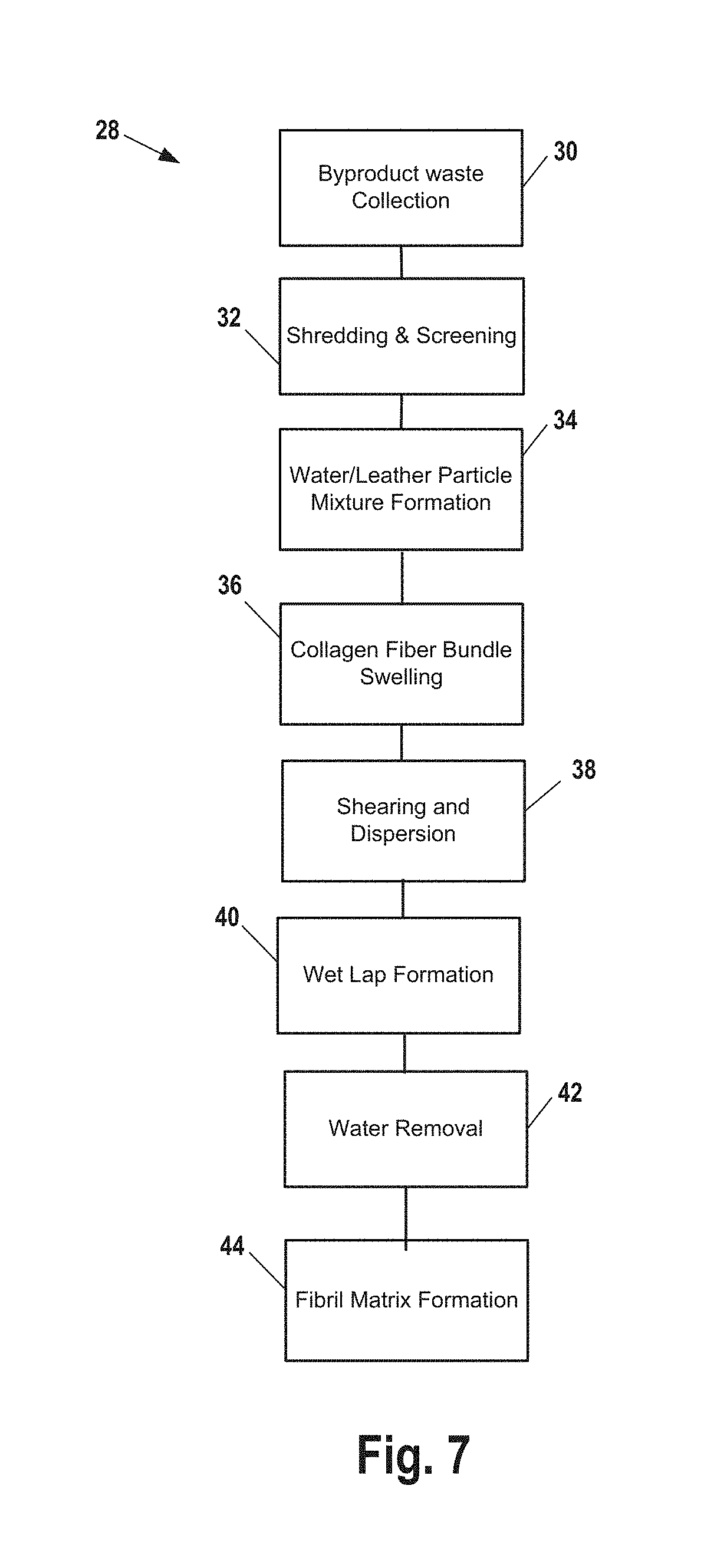High strength leather material
- Summary
- Abstract
- Description
- Claims
- Application Information
AI Technical Summary
Benefits of technology
Problems solved by technology
Method used
Image
Examples
Embodiment Construction
[0037]FIG. 1 is a magnified cross-sectional view of conventional tanned leather 10. Leather 10 is made up by numerous elongate, entangled collagen fibers 12 that cooperate to form an open tanned leather matrix 14.
[0038]FIG. 2 is a cross-sectional representational view of a single collagen fibril bundle 16 segment made up of constituent elongated bundles of collagen fibrils 18. It is understood that FIG. 2 is a representational view and that in naturally-occurring collagen fibril bundles, the constituent elongated bundles of collagen fibrils would not be aligned in uniform, parallel formation. The disclosed leather substrate is formed from processing collected scrap leather byproducts derived from conventional leather processing steps.
[0039]Collected scrap leather byproducts are ground or shredded into particles 20 of desired size containing leather material including fibril bundles 16. Collagen fibril bundles 16 are subjected to water absorption and distressed though swelling steps ...
PUM
| Property | Measurement | Unit |
|---|---|---|
| Fraction | aaaaa | aaaaa |
| Force | aaaaa | aaaaa |
| Fraction | aaaaa | aaaaa |
Abstract
Description
Claims
Application Information
 Login to View More
Login to View More - R&D
- Intellectual Property
- Life Sciences
- Materials
- Tech Scout
- Unparalleled Data Quality
- Higher Quality Content
- 60% Fewer Hallucinations
Browse by: Latest US Patents, China's latest patents, Technical Efficacy Thesaurus, Application Domain, Technology Topic, Popular Technical Reports.
© 2025 PatSnap. All rights reserved.Legal|Privacy policy|Modern Slavery Act Transparency Statement|Sitemap|About US| Contact US: help@patsnap.com



